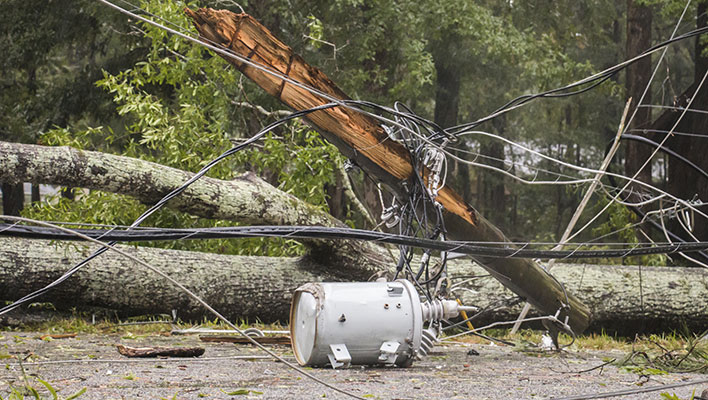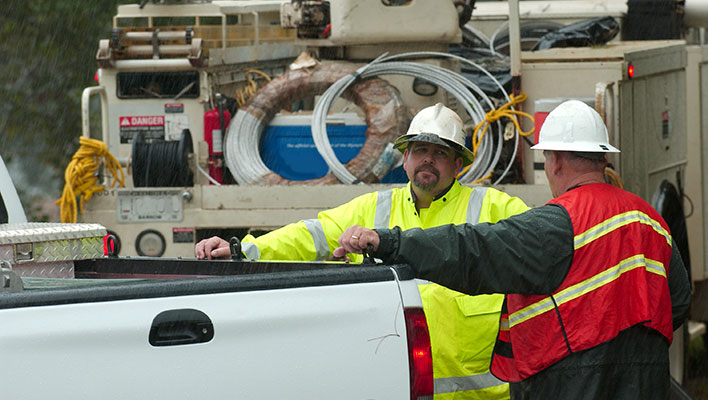POWERGRID International recently published a featured article by Darrin Reeb, Managing Director – Field Mobility for ARCOS. Titled ‘Accelerating Into the Energy Transition While Battling Climate Change‘. Read it now:
Last month set the world record for the hottest July ever documented. Climate change has created two parallel imperatives for the power grid, like the faces of a coin.
On one side, electric transmission and distribution utilities have been propelled into the energy transition as net zero and decarbonization policies, expectations from Wall Street, and government incentives draw a laser focus on replacing fossil fuel generation with utility-scale renewable energy. This surge in renewable supply from disparate remote areas intersects with electric demand that is forecasted to double or even triple according to Elon Musk in the next two decades, all of which sets our industry up for a transmission and distribution construction boom equal in scale to America’s transcontinental railroad.
On the flip side of the coin are an increasing frequency, severity, and variety of climate change related outage events. From this year’s atmospheric rivers on the west coast, unprecedented wildfires in Canada, flooding in the east, and monster tornados in the heartland, electric utilities and their mutual assistance crews must continuously stop blue sky work to respond to unplanned outages even as they are asked to accelerate into the energy transition with fewer field workers than they’ve ever had. It’s like trying to replace a flat tire while your truck is in full motion.
Despite the headwinds to the energy transition, many utilities are doubling down on system expansion and hardening even as they respond to the effects of climate change. Case in point, one of the top ten largest utilities in the US recently shared its strategic vision for the future, which led with hardening its systems against climate change, decarbonizing the grid at every moment and optimizing system capacity to meet local demand. Take the first and third point together and the anticipated explosion in construction is clear. Yet we are simply unprepared to execute this type of strategy when it comes to the level of net new transmission and distribution that is required.
In many ways, utilities are currently better equipped to manage the effects of climate change because we have focused our attention into outage management and mutual assistance digital transformation. Widescale adoption of OMS, advanced distribution management systems, fault isolation location and restoration services, and RAMP-UP have set the industry up to respond to climate change more efficiently, although there is still work to be done.
Construction management is the industry’s weakest link, where manual and paper-based processes, supply chain constraints, and approach to managing a hybrid workforce limit capital project throughput under a steady state model. However, electric transmission and distribution systems simply cannot scale with the status quo approach given climate change and the demands of the energy transition, which not only expands topology, but will also require high tech strategies to mitigate risks, e.g., burying power lines.
The same public utility who shared their strategic vision also explained how they would expand their electric systems with two very specific items that caught my eye: 1) create a lean operating system which fosters breakthrough thinking, and 2) build an efficient end-to-end work management strategy. As someone who has spent the last twenty years on the forefront of digital utility transformation, this is definitely a move in the right direction, but the devil is in the details.
From my own experience working with another of the country’s top 10 electric utilities, digital transformation can lead from many solutions to discrete problems where choice of technology depends on the work being done. For example, construction projects are managed with a mix of disconnected CAD, scheduling, and inventory management solutions while trouble tickets are managed in a WMS and gray sky work in an OMS. Just as TV and movie watchers are overloaded with today’s explosion of streaming services like Netflix, Hulu, Max, and more, today’s field worker faces app overload. Rather than adding to a utility’s information sprawl, what is needed is one solution to a set of problems, which is why many teams are prioritizing an end-to-end work management approach that breaks down data siloes and accelerates the flow of information between the field and back office.
Breakthrough thinking is also a critical ingredient to avoid mere incremental improvement and leapfrog the industry ahead in terms of construction management and outage response. One of those breakthrough thoughts is very elegant – rather than ripping and replacing technology with something monolithic, a massive and time-consuming expense when a solution is needed today, simply reach into a utility’s existing digital ecosystem and bring systems together for a holistic view of people, assets, and work leveraging mobile workforce management technology.
What makes mobile workforce management possible is the mobile app every line worker carries in their pocket and bidirectional APIs (two way streets as it were) that pull disparate data together, including GIS, crew GPS, WMS, inventory, and OMS, as well as push field data back to systems of record. As a result, crews gain instant access to the work orders they need, which enables work to get done directly from one app, not a dozen, while elevating situational awareness for the field and back office.
There are profound implications of mobile workforce management technology that will enable teams to meet challenges of climate change and the energy transition head on, bringing much needed digital construction management capability as we expand and harden systems. Adopting an end-to-end mobile workforce management approach can also address the imperative to respond to the effects of climate change, bringing the same set of tools to gray sky work to drive similar levels of efficiency.






